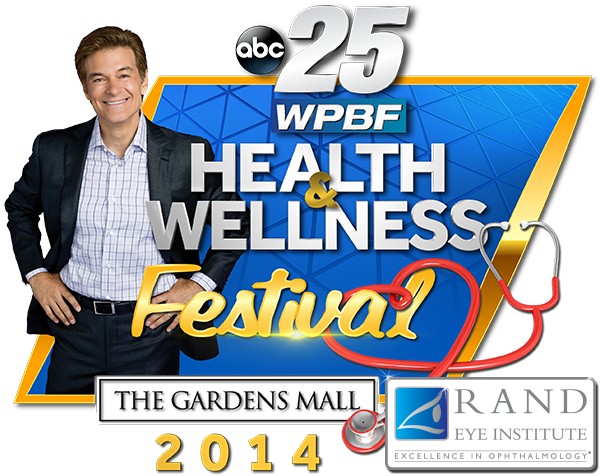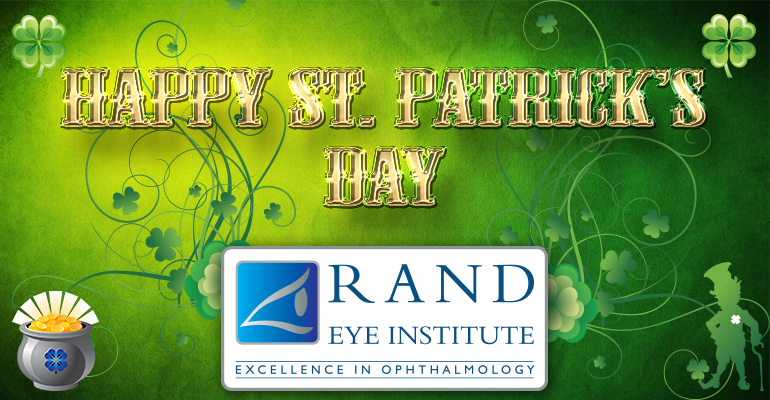Do Not Put Your Eyes at Risk
Don’t put your eyes, something so highly valued at risk when wearing protective goggles or glasses is so simple, they can make a difference.
Prevent Blindness America states that each year more than 700,000 Americans injure their eyes at work. Another 125,000 Americans injure their eyes at home. Another 40,000 American children and adults suffer eye injuries during sports, while many more eye injuries go unreported. Experts say that using the proper safety goggles or glasses could prevent around 90% of all eye injuries. Depending on your lifestyle or work situation your safety goggles or glasses could vary.
Do you know the difference between safety goggles/glasses and regular eyeglasses?
Protective eyewear has to meet a higher standard for impact protection than normal eyewear. Protective or “safety” glasses can have prescription lenses or normal non-prescription (aka plano) lenses. Regardless of size or durability of the frame and lenses, regular everyday eyewear does not qualify as safety or protective eyewear, unless a specific criteria is meet (aka the higher standard). The higher standard is more commonly known as the safety guidelines for the workplace, which is established by the United States federal government. The goal of the government is to decrease the risk of injuries on the job. The Occupational Safety and Health Administration (OSHA) acts within the U.S. Department of Labor and oversees safety practices in the workplace and in educational settings.
Which Safety Goggles or Glasses are Best for Home Use?
For those who are independent contractors or even if you are working on your own home, one should choose the frame and the lenses that received the highest rating for high impact to be extra safe while on the job. The high impact lenses can be bought at most hardware, building supply and sporting good stores.
Most safety glasses are made of a very might polycarbonate, which is designed that way for comfort and come in attractive wrap-style frames. Styles that have the highest impact rating will have “Z87” on them.
If you need safety glasses and require prescription lenses you should consult an eye doctor or visit an optical store.
Safety Standards for Eyewear
American National Standards Institute (ANSI) Safety standards for eyewear consists of the following features:
- They go through basic impact tests where each lens is test on its own. For the higher impact class, the frame and lenses are together as one.
- Non-prescription lenses are considered to be structurally weaker than prescription lenses when being used for high impact; this is do to the prescription lenses being thicker.
- Safety lenses now have 2 classifications: basic and high impact
- The “Drop Ball” test, which will prove whether the basic impact is passed or failed. This test consists of a steel ball, one-inch in diameter being dropped onto the lens from 50 inches high. In order to pass the test the lens must not crack, chip or break. All safety lenses must go through this test. When using plastic lenses, only a sample of a rather large batch must undergo testing, not every pair of lenses.
- Another high impact test is one where a steel ball, a quarter inch in diameter is launched at the lens at a speed of 150 feet per second. In order to pass the lens must no chip, crack, break and cannot come undone or dislodge from the lens holder.
To determine if a safety goggle or glasses lens have passed the high speed test as described above, you will see a “+” marking, which confirms the lens success for high velocity impact. You should also look for these markings, “V” and “S”. The “V” indicates that the lens is photochromic. The “S” indicates that the lens has a special tint. In some cases (depending on use or job) some glasses or goggles may require or come with a mild to moderate tint. For example a person or job that requires you to cut or weld might require a thicker lens and a stronger tint.
WPBF 25 Health & Wellness Festival 2014
Visit the Rand Eye Institute this Weekend at the WPBF 25 Health & Wellness Festival 2014
Saturday, March 29th
10AM – 4PM
WPBF 25 Health & Wellness Festival 2014
Location: The Gardens Mall
3101 PGA Boulevard
Palm Beach Gardens, FL 33410
It’s time to get serious about your health, South Florida! Dr. Oz is coming back to see you personally! WPBF 25′s Health & Wellness Festival 2014 is bigger and better than last year, as America’s Doctor brings the excitement of The Dr. Oz Show to the Gardens Mall! Just announced: Lisa Oz, best-selling author, show host and editor-at-large of Dr. Oz’s new magazine The Good Life, joins her husband on stage!
Come see and talk to the experts at the Garden Mall this Weekend from 10AM – 4PM.
Happy St. Patrick’s Day
Happy St. Patrick’s Day Everyone!
How much do you know about St. Patrick’s Day?
- Corned beef and cabbage is a traditional St. Patrick’s Day dish. In 2009, around 26.1 billion pounds of beef and 2.3 billion pounds of cabbage were produced in the U.S.
- The first St. Patrick’s Day parade took place in the U.S. on March 17, 1762. This occured when Irish soldiers serving in the English military marched through New York City.
- More than one-hundred St. Patrick’s Day parades are held across the U.S. New York City and Boston are home to the largest celebrations in the U.S.
- At the annual New York City St. Patrick’s Day parade, participants march up 5th Avenue from 44th Street to 86th Street. Each year, between 150,000 – 250,000 marchers take part in the parade, however, automobiles or floats are not allowed.
- There are 34.7 million U.S. residents with Irish ancestry and this number is more than seven times the population of Ireland itself.
- Irish is the United States second most frequently reported ancestry, ranking behind German.
- There are around 144,588 current U.S. residents who were born in Ireland.
Eye Injuries in the Workplace
Any job in the U.S. workplace that has potential for airborne particles or noxious chemicals, employers are required to abide by the Occupational Safety and Health Administration (OSHA) guidelines. OSHA has guidelines about the workplaces and what type of eye wear and emergency eye care is to be used.
Experts say that over 90% of eye injuries in the workplace can be prevented by taking a few simple steps of precaution and wearing safety glasses. For example, if you use any form of power tool or yard trimming device, you should wear safety glasses. If you wear corrective lenses, hardware stores sell inexpensive goggles that will normally fit over your glasses. There are other more expensive types of glasses that you could also buy.
Eye Safety and Your Air Bags
Most people drive their car everyday and since 1989 when air bags were first required in automobiles, these devices have saved thousands of lives. However, there has been plenty of controversy about the risk and reward of air bags. Though air bags can save your life, when deployed, you could possibly sustain a corneal abrasion or another eye injury from the air bag. However, without the air bag you would be susceptible to much worse injuries. To reduce any risk to your eyes, always make sure that you:
- Make sure you are wearing your seatbelt and it is properly adjusted
- Adjust the headrest for the proper support
- Sit at the minimum, 10 inches away from the steering wheel
- Do not smoke while driving
- Lastly, have children sit in the back, with seat belts properly fastened and if needed, safety seats adjusted to the proper setting.
Remember, Safety First! specially when it comes to protecting your eyes.
Using the Computer at Home and at Work
Using a computer in the workplace can be a very simple task, but it can cause a strain on your eyes. Avoiding simple things like computer stare and sitting too close to the screen can help prevent this. Computer stare is when an individual forgets to blink for an extended amount of time while looking at the screen. When sitting at the computer you want to follow the 20×4 rule. You want to keep your eyes at least 20 inches away from any screen, take a 20 second break every 20 minutes to look at something at least 20 feet away.
The overhead lighting at your computer can also cause a strain on the eyes if the overhead light is brighter than the light coming from the computer screen. You need to make sure that you keep your monitor up to date, old computer monitors that have low-resolution screens are hard on the eyes.
A persons posture can affect the strain, how one sits, the chair that you use, and having the mouse too far away. One needs to make sure that they sit with straight posture and be sure to not turtle over with their back rounded leaning towards the screen. Make sure that you use a chair that has good support and when using the mouse, keep it close to you and not by the computer screen.
Preventing Eye Injuries at Home and the Workplace
Prevent Blindness America states that the most common agents of eye injuries in the workplace are:
• Flying objects (bits of metal, plastic and glass)
• Air or wind-blown objects (dust, wood and sand)
• Tools (screwdrivers, wrenches and etc.)
• Chemicals (oil, gasoline and acid)
• Harmful radiation (welding arcs and UV)
Prevent Blindness America (PBA) has estimated that 2.4 million eye injuries occur is the U.S. each year. About 1 million Americans have lost some degree of eyesight related to an eye injury. Experts say that wearing safety glasses or taking other common precautions can prevent or lessen the degree of more than 90% of these eye injuries.
At home, household cleaners and chemicals are the leading causes of eye injuries. The most common objects that cause the injuries besides chemicals and cleaners are:
• Mascara brushes and other cosmetic applications
• Fingernails (when applying and removing contact lenses)
• Lawn/Garden hand tools and machines
• Bungee cords
• Eyelash curlers
• Falls, bumping into walls, etc.
• Champagne corks
• Battery acid
• Toys/Games with hard/sharp edges
If there is a mishap you should contact your ophthalmologist immediately for
advice. Depending on the situation, your eye doctor may want you to flush your
eye/s with water or saline solution prior to your visit. He or she might also
recommend that you immediately go the hospital for further help. When working
with chemicals a sink should be near by at all times. If an accident occurs you should
flush your eyes with water for several minutes to dilute and rinse out any chemicals
that may have come into contact with your eyes.
Save Your Vision Month & Workplace/Eye Wellness Month
Comprehensive Ophthalmology, Refractive & Cataract Surgery
The eyes really are a window to the rest of the body as much as they are to the world. A simple eye examination can reveal many of the most common or even the most rare medical conditions. For example, did you know that certain eyelid changes are associated with obstructive sleep apnea, a condition that may otherwise go undiagnosed for years? Or that sometimes the only way to tell if there is inflammation or an infection in the body is to look into the eye!
Also, many eye conditions are silent, only manifesting in symptoms once it is too late to prevent permanent vision problems. For example, by the time a peripheral vision deficit is noticed in glaucoma, already at least 25% of the nerves responsible for vision have been permanently damaged! And there are many signs of diabetic retinopathy in the eye that require treatment to prevent vision loss before one would notice a change in vision. Therefore, please don’t wait to go to the ophthalmologist. We are here to make sure you can always use your eyes as a window to our most beautiful world.



